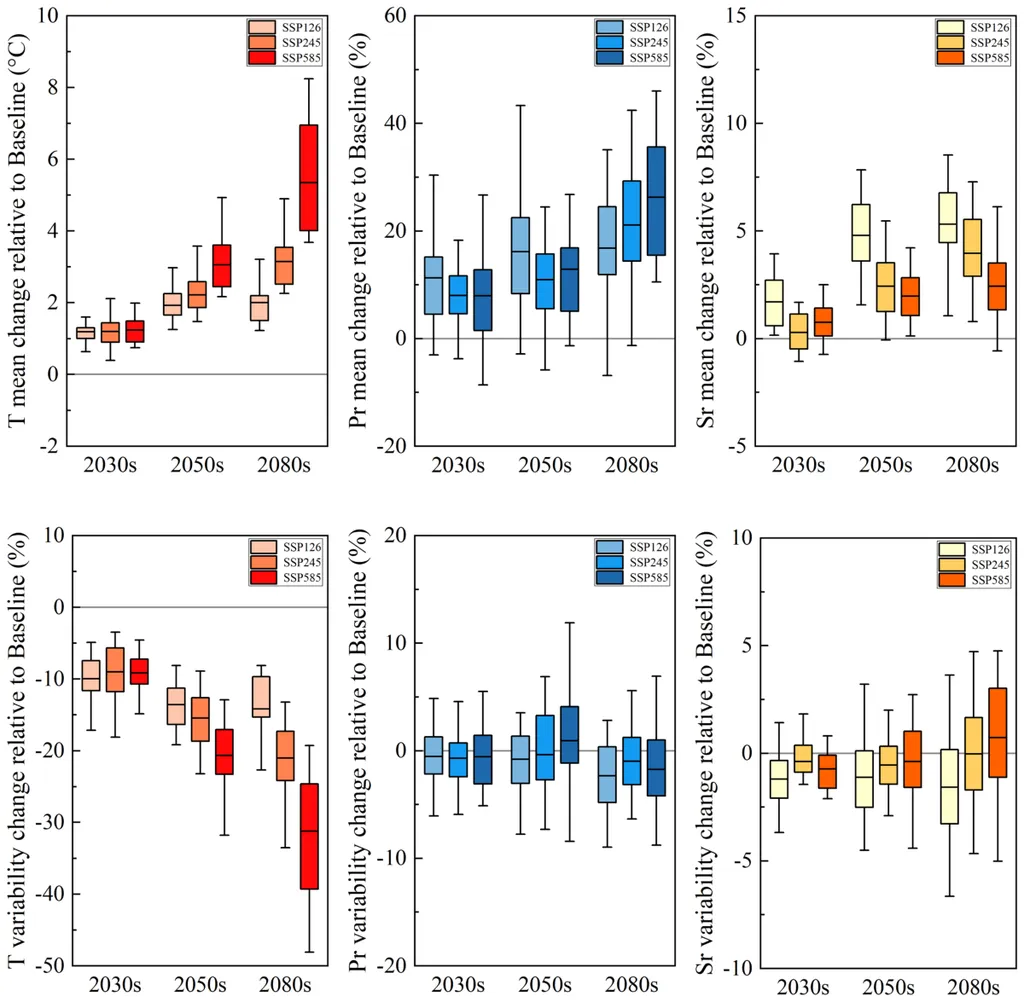In the heart of China’s Shandong Province, a groundbreaking study is reshaping our understanding of how winter wheat responds to climate change, with implications that stretch far beyond the fields. Led by Dongrui Han from the Institute of Agricultural Information and Economics at the Shandong Academy of Agricultural Sciences, this research is unlocking new insights into crop phenology dynamics, offering a roadmap for optimizing agricultural management and ensuring food security.
The study, published in the IEEE Journal of Selected Topics in Applied Earth Observations and Remote Sensing, leverages Moderate-resolution Imaging Spectroradiometer (MODIS) time-series imagery to evaluate the performance of various vegetation index products in extracting key phenology stages of winter wheat. “We focused on green-up, heading, and maturity dates,” Han explains, “as these are critical stages that significantly influence crop yield and quality.”
The research reveals that the Enhanced Vegetation Index (EVI) outperforms the Normalized Difference Vegetation Index (NDVI) in extracting these key phenology stages. This finding is a game-changer for the agricultural sector, as it provides a more accurate tool for monitoring crop development and predicting yields.
But the study doesn’t stop at improving phenology extraction. It delves deeper into the spatiotemporal variations of winter wheat phenology, uncovering a clear pattern: winter wheat matures earlier in the south and west of Shandong Province, while it matures later in the north and east. This spatial variation is crucial for regional agricultural planning and resource allocation.
Over the past two decades, from 2003 to 2023, the study observed an advanced trend in the phenology stages of winter wheat. “The green-up, heading, and maturity dates are all shifting earlier,” Han notes, with average change rates of -0.32 days/year, -0.28 days/year, and -0.09 days/year, respectively. This trend underscores the impact of climate change on agricultural systems and the urgent need for adaptive strategies.
One of the most compelling aspects of this research is its exploration of the time lag effects of climate on winter wheat phenology. The study identifies the current three months as the optimal preseason for climate impact analysis. It finds that preseason precipitation, mean temperature, maximum temperature, and minimum temperature are all negatively correlated with the phenology stages, except for a positive correlation between heading date and preseason precipitation. “This time lag effect is a critical factor that needs to be considered in agricultural management and climate change adaptation strategies,” Han emphasizes.
The implications of this research extend beyond the agricultural sector. For the energy sector, understanding these dynamics can inform bioenergy production strategies, as winter wheat is a significant source of biomass for biofuels. By optimizing planting and harvesting schedules based on phenology dynamics, bioenergy producers can maximize yields and minimize costs.
Moreover, this research paves the way for future developments in precision agriculture. By integrating remote sensing data with climate models, farmers and agronomists can make data-driven decisions, improving crop management and enhancing food security. “Our findings provide a scientific basis for developing adaptive strategies that can mitigate the impacts of climate change on agriculture,” Han concludes.
As we grapple with the challenges posed by climate change, studies like this one offer a beacon of hope. By deepening our understanding of crop phenology dynamics and their response to climate change, we can forge a path towards a more sustainable and food-secure future.

